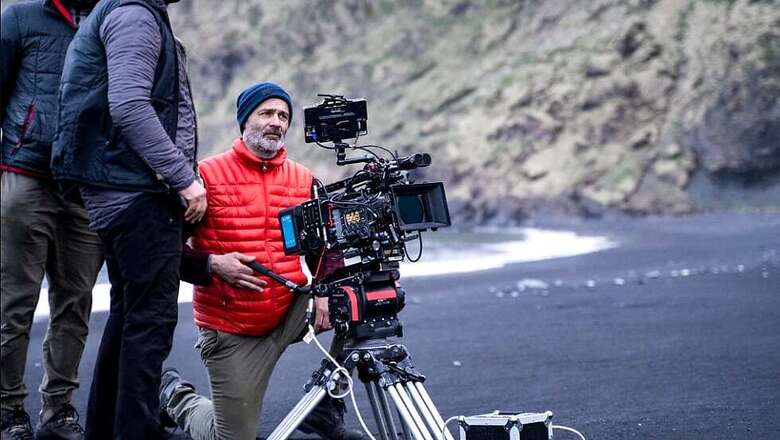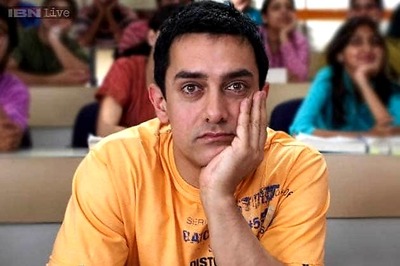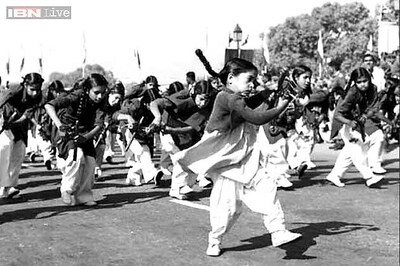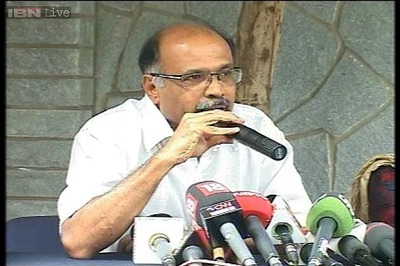
views
Baltasar Kormakur, the Icelandic director best known in the United States for “Everest” and “Contraband,” turned to a color-coded armband system to get his Netflix sci-fi series “Katla” back into production in Reykjavik after the coronavirus shut it down in mid-March.
Producer Lucas Foster made the difficult — and expensive — decision to isolate his entire cast and crew in a small town in Australia to make a reimagined horror film based on the Stephen King short story “Children of the Corn.”
The two filmmakers are among the few who have found their way back into production amid a pandemic. Armed with expansive medical staffs, stringent protocols and imposing security guards willing to yell “Two meters!” whenever anyone gets too close, Kormakur and Foster are the unlikely trailblazers at the dawn of a new era in film.
Everyone wants to know how they did it. In lengthy phone interviews, the two explained the steps they took to get cameras rolling again.
Color-coding on an Iceland soundstage
Kormakur has talked through his methods with London’s film commission, the American Society of Cinematographers, and his former partners at Working Title and Universal Pictures. He’s making a video for Netflix to share with other eager creators looking for a way back.
“I will probably be more known for COVID than for any of my films,” Kormakur said with a laugh. “That is kind of sad.”
In March, he began filming “Katla,” an eight-episode supernatural drama centered on a subglacial volcano that disturbs a tranquil small town. He owns the 50,000-square-foot soundstage where they were working for four days before the government shut the production down along with the rest of the country. Sheltering at home with his four children, Kormakur engineered a system he thought would allow the cast and crew to return once the virus had peaked.
His method involved a color-coded armband system: Those wearing yellow could be near the camera; the actors, and the makeup and costume professionals, wore black and spent most of their prep time in a cordoned-off area of the set; and the producers, script supervisors and visual effects people wore red and were sequestered near the monitors. A few lucky ones were given blue armbands, which allowed them access to all areas of the set. No group had more than 20 people in it.
“This way we could monitor each other,” he said. “It’s hard with crews. People have a tendency to roam, and it’s easy to lose control of it.”
Kormakur’s system was only possible because of Iceland’s rigorous testing policies. Netflix, too, was heavily involved, with executives testing Kormakur’s methods. The streaming giant financed the extra costs associated with the safety protocols and paid the cast and crew salaries when they were shut down.
First, under the system, Kormakur and his entire 80-person cast and crew were tested. Then, each morning, the temperature of everyone entering the set was scanned. Catering was turned into individual boxed meals. Doorknobs, toilets and other surfaces were sanitized on the hour. Most everyone except the actors wore masks, and the makeup artists and production designers were gloved.
“So much for protecting the environment,” Kormakur quipped.
Production has been up and running now for four weeks. And though Kormakur and the other directors filming the series have yet to try a scene involving any close contact or intimacy, it has continued without incident. (Kormakur said they would address those scenes once restrictions loosen further. If that doesn’t happen in time, they will retest actors before filming them. Iceland is currently reopening in phases.)
Two crew members who went to the set with elevated temperatures wound up testing positive for COVID-19. Both were sent home to self-isolate for two weeks, and no one else became infected.
“Our methods worked,” he added. “We caught two people who in another case would have been working with this virus without knowing it.” He added, “I think if you can create filters in society then you can help find the virus and stop it. Whether it’s film companies or other companies.”
When I spoke with Kormakur, only three COVID-19 patients remained hospitalized in Iceland. Now, Kormakur and Iceland’s government are looking at bringing foreign crews into the country to bolster production. He said they could isolate them in empty hotels and get them all tested so they could begin work, a scenario that he said could help restore Iceland’s struggling economy.
“At a certain point, the support and financial packages are going to run dry,” he said. “I don’t know if the Iceland government has much more to give.”
Isolating in an Australian town
Foster, a “Children of the Corn” producer, was 10 days out from finishing his film when we spoke, and at the end, he said he would turn to the mountains of phone messages and emails from eager filmmakers looking for advice.
In a recent phone interview, he wondered whether his experience could be translated elsewhere: “I finished my 24th day of photography, so I have 24 days of experience doing this and learning,” he said. “I think that’s the valuable part. But what we did in Australia is not a direct crossover to, say, shooting in Los Angeles.”
The need for a cornfield in November was what first brought Foster from his Los Angeles home to Richmond in New South Wales. The pandemic is what kept him there. And on May 28, he and writer-director Kurt Wimmer are to complete production on their horror film, shot entirely during the spread of the coronavirus.
Like Kormakur’s set, this one was divided by job function. A nurse, a paramedic and a doctor were present daily. The cast and crew were required to fill out wellness questionnaires at the beginning and end of each day. Temperatures were checked. Surfaces were sanitized. During one particularly challenging sequence shot at night, the actors were dressed in neoprene suits both to keep them warm and to offer them another level of protection when they came in close contact during the scene. (According to Australia’s policies, the “2 meters” rule did not have to be observed when the cameras were rolling.) Hand sanitizer was ubiquitous.
It was also crucial that most of the movie be filmed on an isolated farm in a small town. (The cast and crew have taken over hotels, Airbnbs and some cottages in and around Richmond.) Australia has also been successful in flattening the curve and has begun opening its economy.
But for Foster, who said that the extra precautions added at least 20% to the initial $10 million budget of his indie film, the most crucial decision he made was to house his entire cast and crew together, including the guardians for more than 25 child actors and one actor’s dog.
“It was an uncomfortable decision but one that made this whole thing possible,” said Foster, who has been isolating with his film family for close to 80 days. “It’s not an inexpensive way to operate a film.”
He also contended with a shortened shooting schedule because of the usual restrictions placed on minors, navigated the stress levels of a disparate crew, and found replacement actors when a few dropped out at the last minute. One 12-year-old was too afraid to get on an airplane from Los Angeles. Another actor, based in Sydney, decided against making the trip to Richmond.
“There is no cheat sheet for this,” Foster said. “Every single thing that everybody in every department has to do” must be rethought, he added. “Retraining on the job has been the most challenging thing.”
He also said that he had underestimated the toll that filming during a pandemic would take on actors, who had to stay present while copious distractions swirled around them. In the initial days of production, he admitted, he didn’t pay enough attention to his crew’s mental health, a situation he has rectified with more thorough monitoring and less news watching.
Yet Foster is comfortable with his plan to proceed.
“We made the decision as a group that we were better off isolating in a small town with each other and continuing to do our work, keep our employment alive and our sanity,” he said. “Our creative output is a large part of our identity. I didn’t want to kill that.”
(Nicole Sperling c.2020 The New York Times Company)




















Comments
0 comment